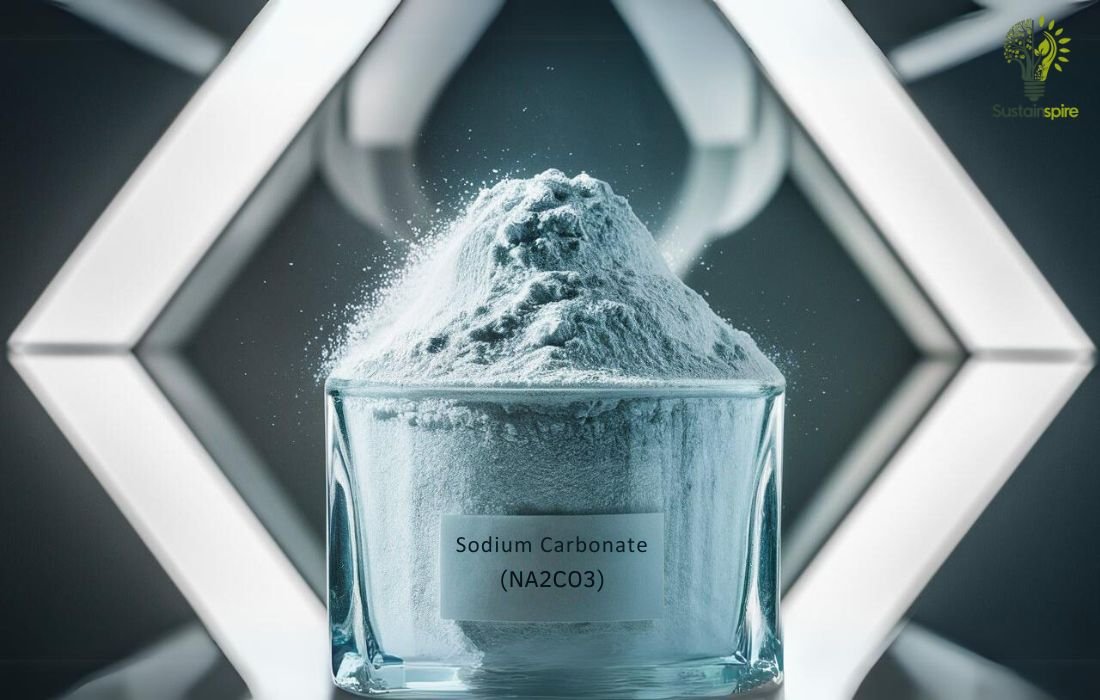Have you ever wondered who handles pollution disputes and ensures rules are followed? What happens when businesses, industries, or individuals do not meet environmental standards? The answer might surprise you. A special group called a Pollution Adjudication Board often handles these situations.
This board plays an important role in protecting our environment. It holds polluters accountable for their actions. It provides a platform for resolving conflicts and interpreting environmental rules. It ensures that environmental laws are upheld fairly and effectively. This adjudication board addresses pollution concerns by acting as a bridge between concerned parties and environmental regulations.
This article explores the Pollution Adjudication Board. We will examine its structure, powers, and role in maintaining a healthy and sustainable environment. You will better understand how this board operates and its impact on our communities.
Understanding the Basics:
Pollution Adjudication Boards are like referees for our environment. They ensure everyone follows the rules to keep our air and water clean. These boards consist of people who listen to complaints about pollution. The board members then decide on the best way to fix the problem.
What is a Pollution Adjudication Board?
A Pollution Adjudication Board (PAB) is like a judge who focuses on pollution cases. Instead of going to a regular judge, people go to the PAB for arguments about pollution control laws.
The idea of special environmental courts or boards became popular in the mid-1900s. This happened as people became more aware of environmental problems. They realized they needed specific legal help for these issues. These courts and boards would have experts in environmental science and law to handle these complex cases.
For example, imagine a factory is releasing more pollutants than allowed. The government agency in charge of pollution control might act against the factory. If the factory disagrees with the agency, it can go to the PAB to appeal. Let us explore more about the PAB.
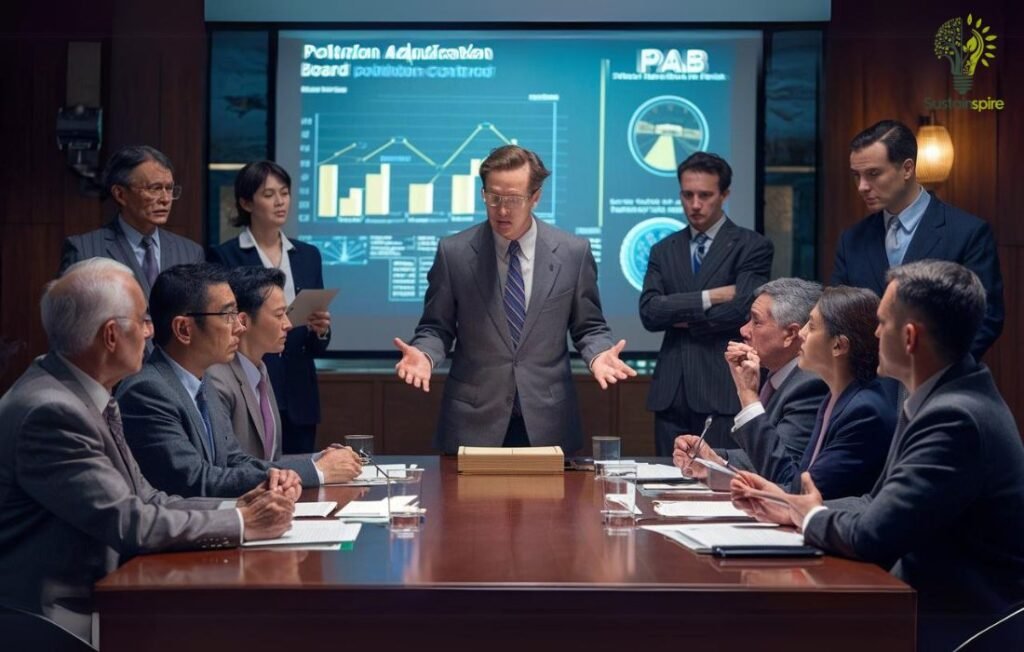
1. PAB: Structure and Authority
The structure of a PAB can differ from place to place. Some PABs might be part of a larger environmental agency, while others function independently. Typically, a PAB consists of members with expertise in environmental science, law, engineering, and sometimes even public health.
For instance, India established its Central Pollution Control Board (CPCB) under the Water (Prevention and Control of Pollution) Act of 1974. This board plays a crucial role in setting pollution standards and advising the government on pollution-related matters.
Many other countries have established similar bodies. Though they may have different names, such as environmental courts or tribunals, they reflect the increasing global emphasis on environmental protection. The United States utilizes the Environmental Protection Agency (EPA) with specific pollution control boards operating at the state level. Similarly, Canada utilizes Environmental Protection Tribunals to handle various environmental disputes, including pollution cases.

2. Why Does the Pollution Adjudication Board Exist?
Pollution cases can be very complicated. They often involve understanding scientific data and technical jargon. The PAB exists to provide a fair and expert forum to resolve these disputes. PABs exist to:
- Ensure that environmental laws are upheld.
- Hold polluters accountable for their actions.
- Impose fines and penalties.
Think of it this way: you wouldn’t want a chef deciding a legal case, right? Similarly, you wouldn’t want a judge with no scientific background making decisions about complex pollution issues. That’s where the PAB steps in, ensuring fairness and accuracy in environmental disputes.

3. Who Are the Key Players on a PAB?
The key players on a PAB are the board members themselves. As mentioned earlier, these are experts from various fields related to the environment and law.
However, beyond board members, a PAB hearing will involve individuals or representatives from the parties in dispute. This could be anyone from government agencies to businesses accused of violating pollution regulations, to citizen groups advocating for stricter environmental protection.
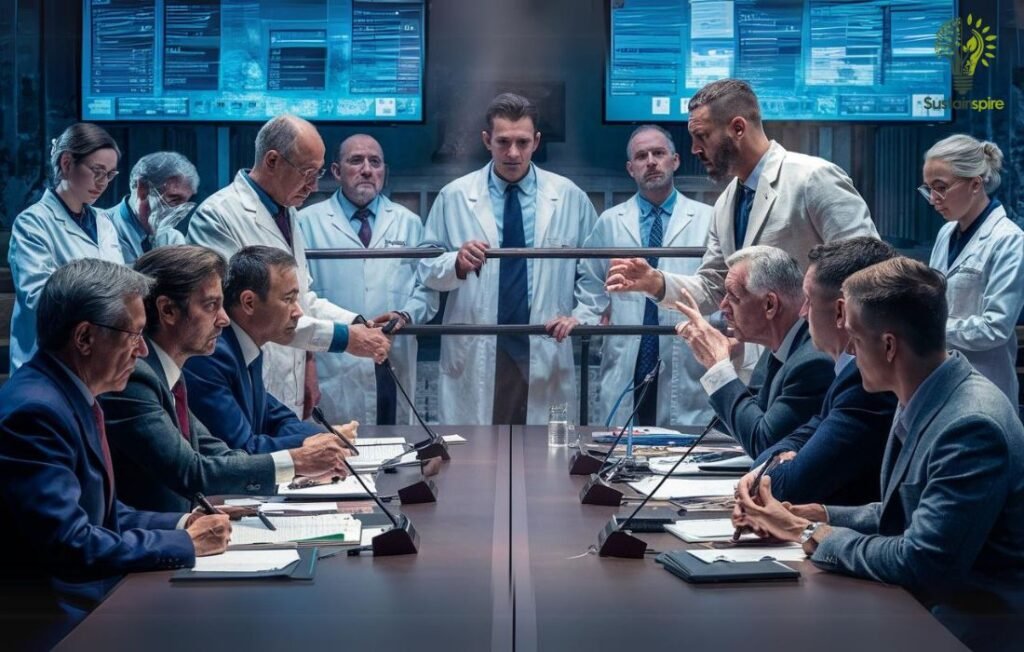
How Does a Pollution Adjudication Board Work?
These boards are typically composed of technical experts and community representatives. They have the authority to investigate complaints, conduct hearings, and issue decisions. For example, let’s say a factory is accused of releasing harmful chemicals into a river. The board would gather evidence and hear testimony from all parties involved. This includes the factory owners and concerned citizens. The board would then decide if the factory violated environmental regulations.
1. From Complaint to Resolution:
The process usually begins with a formal complaint. An individual, group, or government agency can file this complaint. The board reviews the complaint. They determine if it falls under their jurisdiction. If it does, they launch an investigation. This may involve site visits, data collection, and interviews. After the investigation, a formal hearing takes place. This allows all sides to present their case and provide evidence.
Based on the evidence and arguments, the board makes its decision. They can issue fines, order corrective actions, or even shut down polluting operations. The decisions are legally binding. However, parties can appeal to a higher court if they disagree with the outcome.
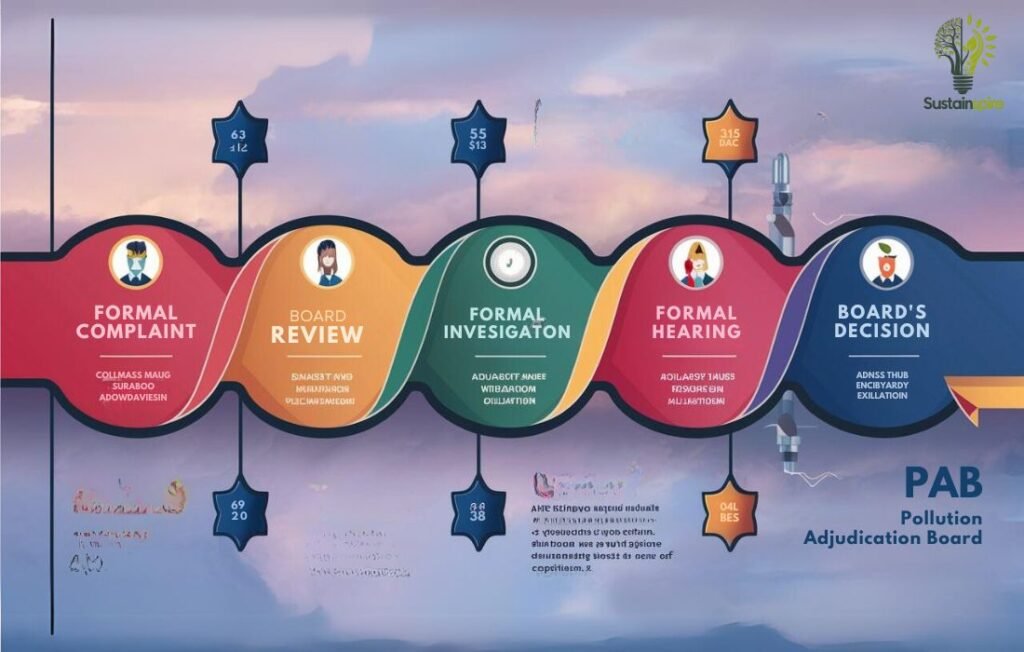
2. Public Participation in Pollution Cases:
Public participation is a vital part of the process. Citizens can attend hearings, provide testimonies, and submit relevant information. This ensures transparency and allows the community to have a voice in matters that directly affect their health and environment. After all, we all share the same planet and have a stake in keeping it clean!
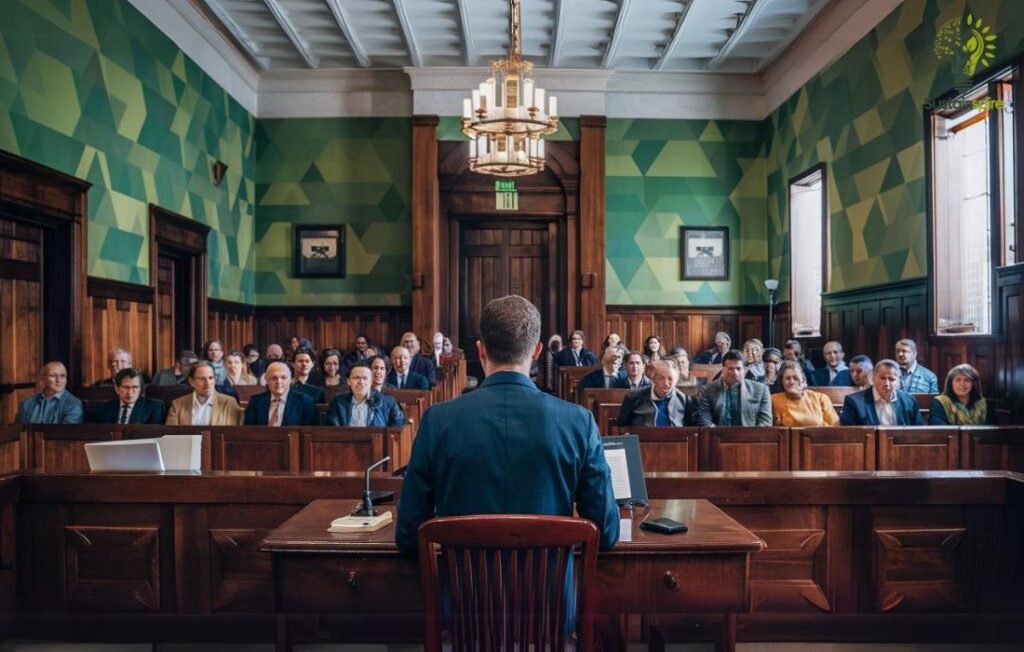
Preparing for Your Case: Navigating the Pollution Adjudication Board
Let’s face it, dealing with pollution disputes is about as fun as a root canal. But sometimes, it’s necessary to protect your rights and the environment.
Do You Need to Appear Before a Pollution Adjudication Board?
Pollution Adjudication Boards act like judges for environmental issues. These boards exist at the state or provincial level in many countries. They handle disputes related to pollution control laws. Imagine a factory releasing harmful chemicals exceeding permitted limits. This could lead to complaints from affected communities. If these complaints can’t be resolved through negotiation, the case might end up before the Pollution Adjudication Board.
1. Identifying Common Pollution Disputes:
Pollution disputes are diverse and vary as much as the pollutants themselves. These disputes happen in many situations and often involve complex technical issues. Here are a few examples:
- Air Pollution:
Factories can pollute by releasing too much smoke or harmful gases. This pollution can cause health problems for nearby residents. For instance, in 2020, Delhi, India, suffered from severe smog due to factory and vehicle emissions. Residents may file complaints against polluters, such as a power plant releasing too much particulate matter. This pollution can lead to breathing difficulties.
- Water Contamination:
Factories can also pollute water by dumping wastewater into rivers or lakes. This contamination harms both people and the environment. One notable example is the effort to clean the Ganges River in India, heavily polluted by industrial waste. Residents might take action if a factory, for example in Michigan, is accused of releasing wastewater with too many heavy metals. These metals then contaminate drinking water sources.
- Hazardous Waste Disposal:
Improper disposal of toxic waste by industries poses serious threats. The Love Canal disaster in the United States is a stark example. Toxic waste buried at this location caused serious health problems. This case highlights the long-term dangers of improper waste disposal. In another example, a tanker spill off the coast of British Columbia could lead to legal action. The responsible party could be sued for environmental damage and financial losses to fisheries.
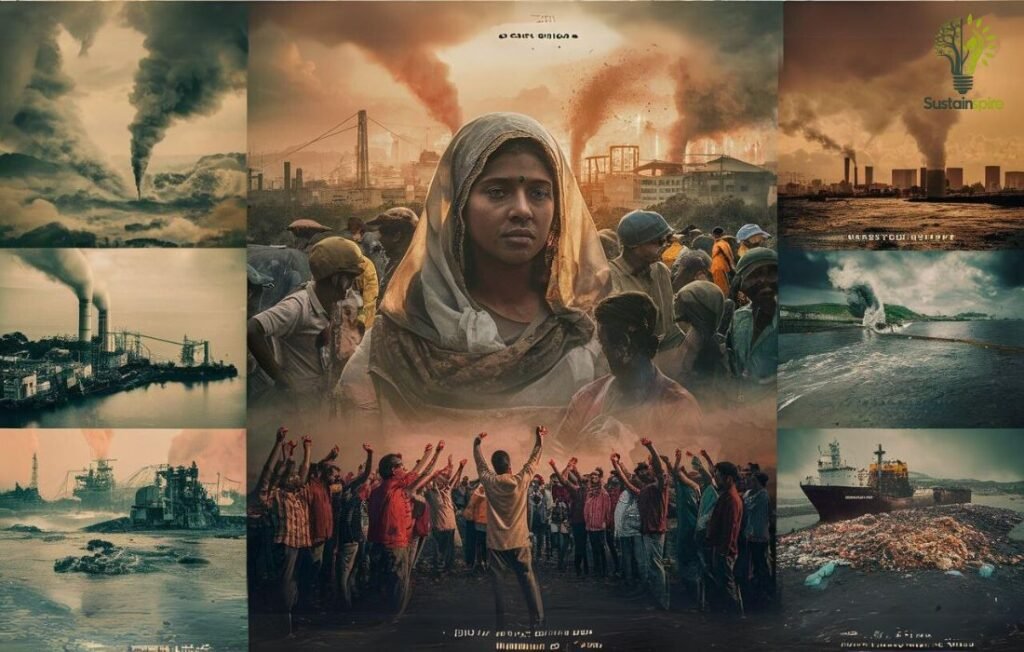
2. Who Are the Key Players in a Pollution Case?
Understanding the key players in a pollution dispute is crucial for finding a resolution. Here’s what you need to know:
- Complainant: A person or group who raises the pollution concern. It could be a citizen, an environmental group, or a government agency.
- Respondent: The party accused of causing the pollution. It could be a business, a town, or an individual.
- Pollution Adjudication Board: This neutral group listens to evidence in the dispute. They then make a decision, similar to a judge and jury.
- Experts: These are scientists, engineers, or other specialists. They provide technical information about the pollution problem.
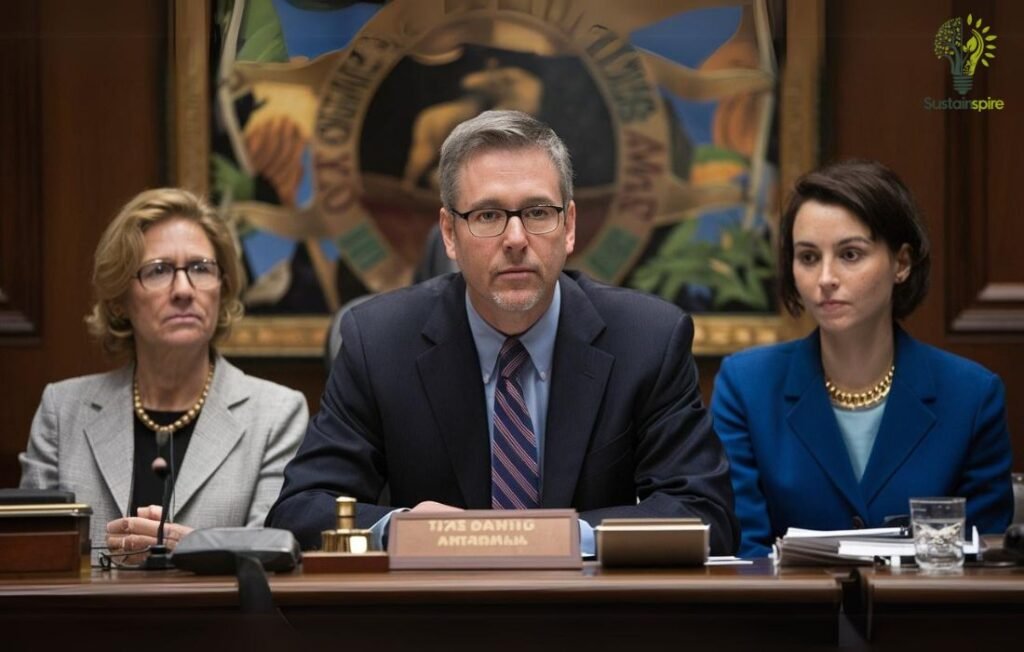
Building a Strong Case:
Presenting a strong case before a pollution board requires more than just feeling upset. It demands compelling evidence to support your claims.
1. Gathering Compelling Evidence:
In this section, we will learn about the evidences, which we should get to support our case.
- Official Complaints: Maintain records of all complaints filed with relevant authorities concerning the pollution. For example, documented complaints submitted to the Environmental Protection Agency (EPA) in the United States can serve as strong evidence of persistent pollution problems.
- Photographs and Videos: Visual evidence is impactful. Capture images showcasing the pollution – such as plumes of smoke, discolored water, or piles of hazardous waste.
- Scientific Data: Incorporate scientific data to bolster your case. This could include air and water quality test results or reports generated by environmental monitoring stations.
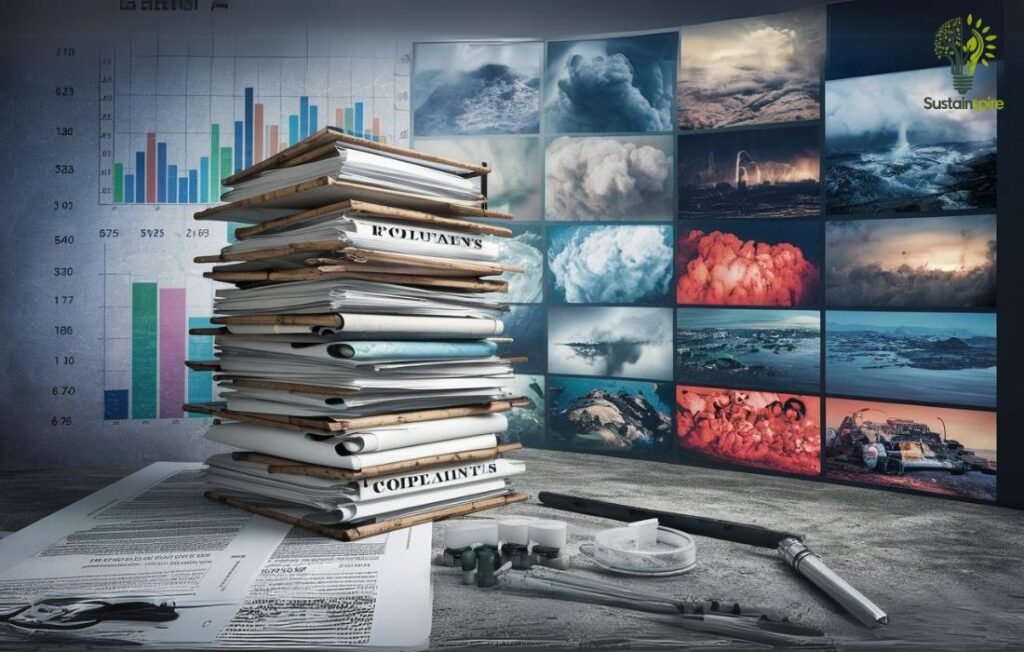
2. Expert Opinions:
Expert opinions can significantly help your case. A qualified environmental engineer, for instance, could testify about how a factory’s pollution controls are not good enough. Additionally, a health professional could show evidence that connects health issues in the community to that specific pollution.
Remember, a well-researched and well-documented case greatly increases your likelihood of a positive outcome. Don’t be afraid to seek legal advice from lawyers who specialize in environmental law. They can guide you through the legal process and help you build the strongest case possible.

Facing the Pollution Adjudication Board: Presenting Your Case
You’ve received a notice. You’re scheduled to appear before the Pollution Adjudication Board. This can feel intimidating, but understanding the process and preparing your case thoroughly can make a significant difference. Let’s break down how to navigate this hearing effectively.
Presenting Your Case Effectively
First and foremost, preparation is key. Just like you wouldn’t want to be the person who brings a knife to a gunfight, you don’t want to show up unprepared for this important hearing.
1. Communicating Your Points Persuasively:
Use clear and concise language when presenting your case. This is not the time to channel your inner Shakespeare; stick to straightforward explanations. Support your arguments with solid evidence.
2. Facts, Figures, Examples:
Instead of simply saying, “The pollution level is high,” provide specific data: “Pollution levels exceeded the allowed limit by 20% on three separate occasions.” Use graphs or charts if they help illustrate your points. Remember, a picture is worth a thousand words (and maybe even a reduced fine!).
3. Understanding the Legal Jargon:
Legal terms can sound like a foreign language. Familiarize yourself with key terms used by the Board. For example, knowing the difference between “emission standards” and “effluent limitations” can prevent misunderstandings.

Navigating the Hearing Process
Let us explore, what to expect during the hearing of the case, and right & responsibilities as a party.
1. What to Expect During the Hearing:
The hearing allows all parties involved to present evidence and arguments. The Board members will listen, review submitted materials, and may ask questions. It’s like a formal conversation, albeit with higher stakes.
2. Your Rights and Responsibilities as a Party:
As a participant, you have the right to legal representation. You can present evidence, question witnesses, and respond to the opposing side’s arguments. Your responsibility lies in understanding and adhering to the Board’s rules and procedures.
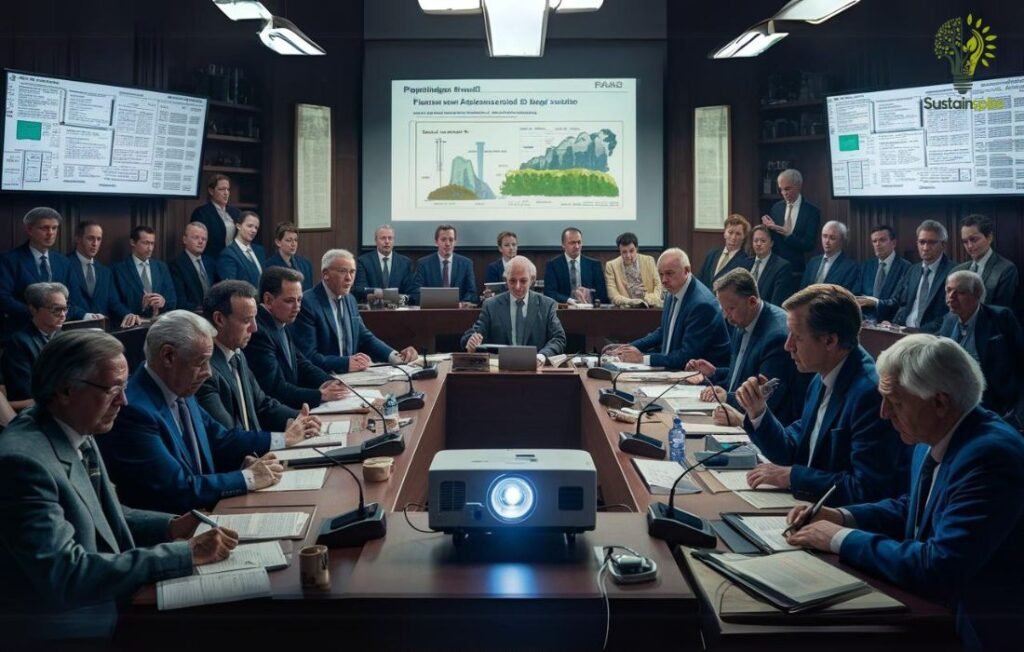
Decisions and Appeals:
The Pollution Adjudication Board (PAB) plays a critical role in resolving environmental conflicts. But what happens after the board reaches a decision? Understanding the potential outcomes and your options for appeal is crucial, whether you’re a concerned citizen or a company facing an environmental challenge.
Understanding Pollution Adjudication Board Decisions:
The PAB’s decisions carry significant weight. They aim to uphold environmental laws and ensure the protection of public health and natural resources. These decisions are legally binding. This means all parties involved must comply with the board’s rulings.
1. Types of Decisions and Their Implications:
The PAB can issue a variety of decisions, each with specific consequences. Here are a few examples:
- Dismissal: The case is closed, and no action is taken. This might occur if the PAB finds insufficient evidence to support the claims.
- Fines: Board may impose financial penalties for environmental violations. For example, a company exceeding permitted pollution limits could face hefty fines, sometimes reaching millions of dollars.
- Operational Restrictions: Jury can limit or modify a company’s operations to mitigate environmental harm. Imagine a factory ordered to reduce its emissions by a specific percentage.
- Remediation Orders: The PAB can mandate environmental cleanup and restoration. For instance, a company responsible for contaminating a water source might be required to fund and implement a comprehensive cleanup project.
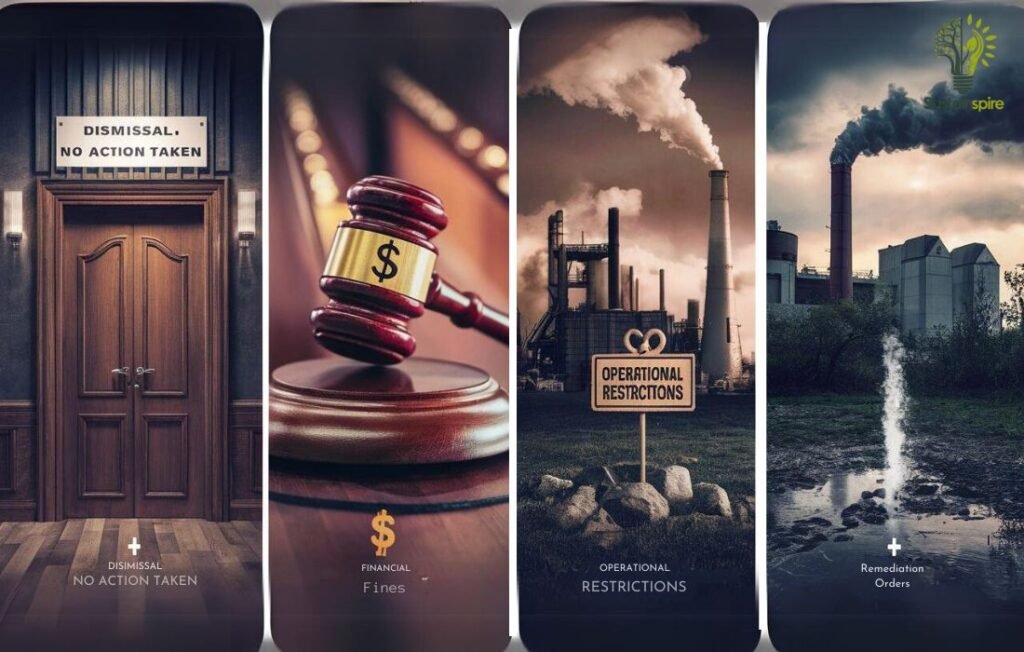
2. What Happens After a Decision is Made?
Once the PAB issues its decision, all parties are typically given a specific timeframe to comply. Failure to do so can lead to further penalties or legal action. It’s like forgetting to pay a parking ticket, but with potentially much larger consequences for our environment.
Exploring Your Options for Appeal:
If you disagree with the PAB’s decision, you may have the right to appeal. This means asking a higher legal authority to review the case and potentially overturn or modify the original ruling. Appealing is a way to ensure a fair outcome.
1. Grounds for Appeal: When You Can Challenge a Decision
Appeals aren’t just about disagreeing with the outcome. You need valid legal grounds to challenge a PAB decision. These might include:
- Procedural Errors: Did the PAB fail to follow proper procedures during the hearing? If so, it could compromise the fairness of the process, forming grounds for appeal.
- New Evidence: Can you present significant evidence that wasn’t available during the initial hearing? Such evidence could sway the outcome in your favor upon appeal.
- Misinterpretation of Law: Do you believe the PAB misapplied or misinterpreted environmental regulations in their decision? This legal argument can be central to an appeal.
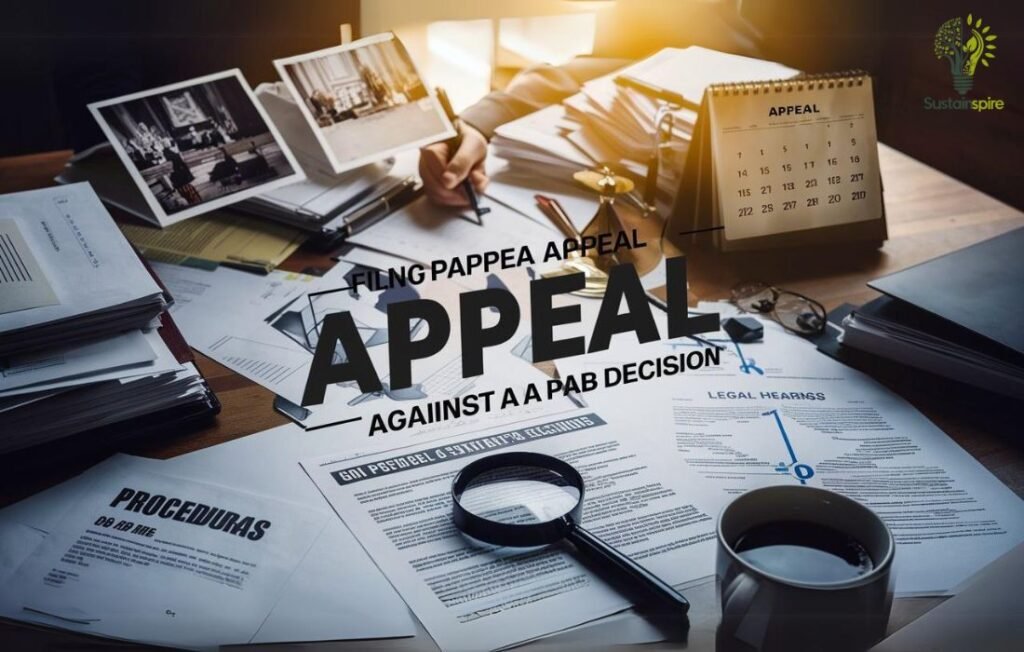
2. The Appeals Process: Seeking a Review of the Board’s Ruling
The appeals process typically involves filing specific legal documents within a defined timeframe and participating in further legal proceedings. The details of this process can vary depending on your jurisdiction and the nature of the case. Seeking legal counsel is crucial to navigate this complex terrain effectively.
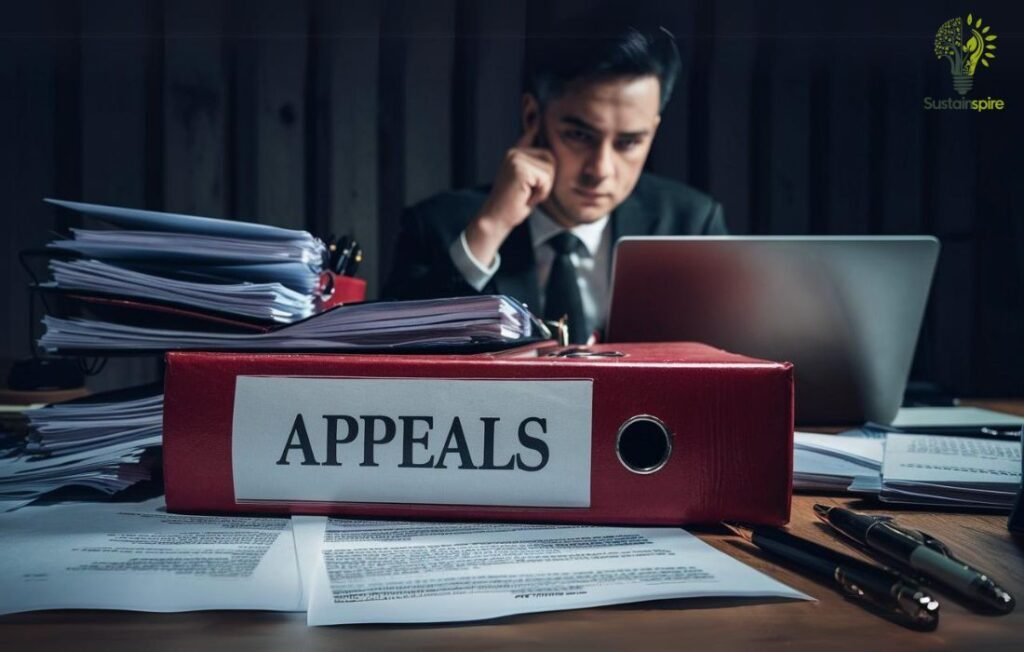
Resources and Support:
Dealing with pollution issues and navigating the Pollution Adjudication Board can feel overwhelming. But remember, you don’t have to do it alone! There are resources and support systems available to help you understand your rights and advocate for a cleaner environment.
Finding Help: Where to Turn for Assistance
Sometimes, you just need a helping hand to guide you in the right direction. Whether it’s legal advice, community support, or simply understanding complex information, these resources can be invaluable:
1. Legal Aid and Representation:
Sometimes, legal expertise is essential. If you need help understanding legal jargon or want someone to represent you in front of the board, consider these options:
- Legal Aid Societies: These organizations provide free or low-cost legal assistance to individuals and communities. They can help you understand your rights, file documents, and even represent you in court if necessary.
- Environmental Law Clinics: Many universities have law clinics that specialize in environmental issues. These clinics offer legal services at a reduced rate and are often staffed by law students supervised by experienced attorneys.
- Pro Bono Attorneys: Some attorneys offer their services for free or at a reduced rate to individuals or organizations working on environmental issues. You can find pro bono attorneys through bar associations or legal referral services.
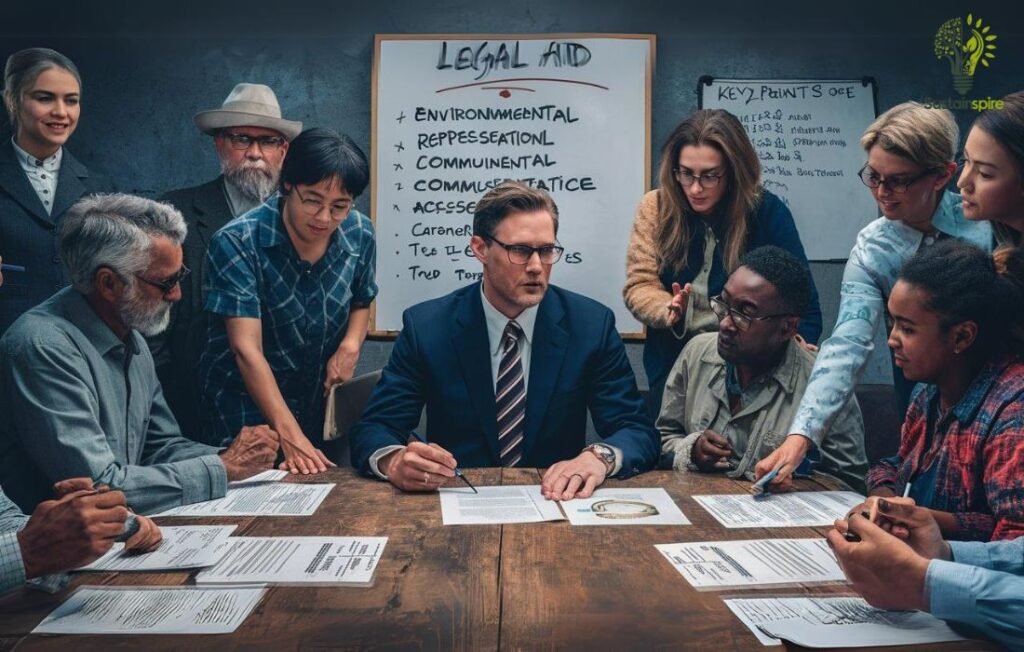
2. Community Organizations:
Remember, you’re not alone in fighting pollution! Many community organizations are dedicated to environmental protection and can provide valuable support:
- Local Environmental Groups: These groups are often on the front lines of pollution issues in your area. They can offer support, and resources, and connect you with others facing similar challenges.
- National Environmental Organizations: Larger organizations like the Sierra Club or the Environmental Defense Fund offer a wealth of information, resources, and sometimes even legal support for pollution-related cases.
- Online Forums and Communities: The internet can be a powerful tool for connecting with others. Online forums and social media groups dedicated to environmental issues can provide a platform to share experiences, seek advice, and find support.

Staying Informed: Essential Resources for Your Case
Knowledge is power, especially when dealing with complex environmental issues. Accessing relevant information empowers you to build a stronger case:
Accessing Public Records and Case Information
Understanding past cases and decisions made by the Pollution Adjudication Board can be incredibly helpful. Here’s how to find that information:
- Pollution Adjudication Board Website: Start with the source! The Board’s website likely has archives of past cases, decisions, and relevant regulations.
- Freedom of Information Act (FOIA) Requests: In the United States, you have the right to request access to government documents, including those related to pollution cases. FOIA requests can help uncover important information about polluters and their activities.
- Court Records Databases: If your case involves legal proceedings, online databases like PACER (Public Access to Court Electronic Records) can provide access to court filings and case documents.
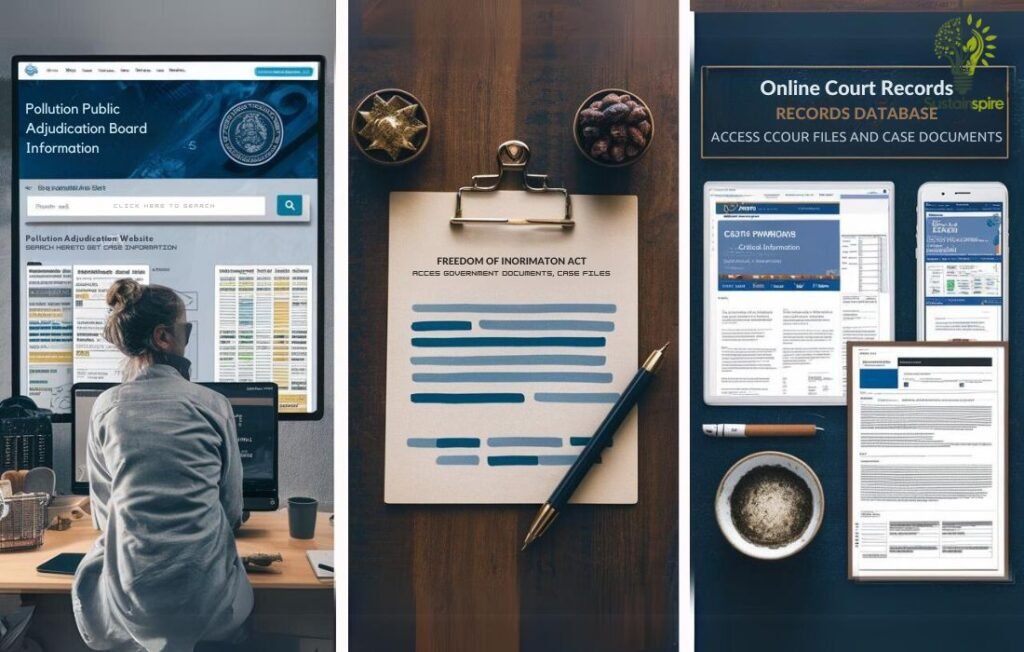
Government Websites and Other Helpful Links
Government agencies and other organizations provide a wealth of information about pollution regulations, reporting procedures, and your rights:
- Environmental Protection Agency (EPA): The EPA website is a comprehensive resource for information about environmental regulations, pollution data, and initiatives aimed at addressing various forms of pollution.
- State Environmental Agencies: Each state has its own environmental agency that handles local pollution concerns. Their websites can provide state-specific regulations, guidelines, and resources for addressing pollution issues.
- University Research Centers: Many universities have dedicated research centers focused on environmental issues. Their websites often feature publications, data, and insights from experts in the field.
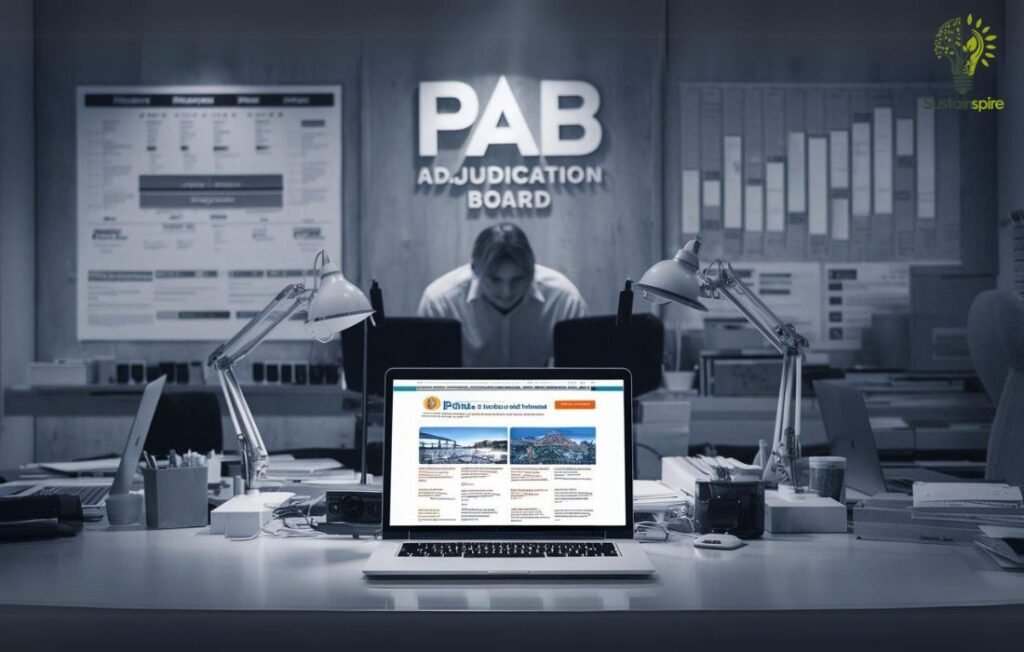
Conclusion:
This article explored the Pollution Adjudication Board (PAB) and its importance. We learned about its structure and role in protecting our environment. The PAB acts as a neutral party to resolve pollution disputes. It ensures everyone follows environmental laws.
The PAB investigates complaints, holds hearings, and makes decisions. It can issue fines, order cleanups, or even shut down polluting activities. Public participation is crucial to this process. It allows citizens to voice concerns and contribute to a healthier environment.
Dealing with pollution issues can feel overwhelming. But resources are available to help you navigate the process. Legal aid societies, environmental groups, and government agencies provide valuable support and information. By working together, we can hold polluters accountable and create a cleaner, healthier world for everyone.
Let us know your thoughts on this vital topic. Share your experiences or questions in the comments below!







